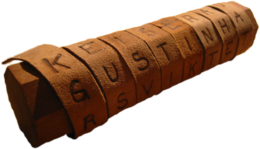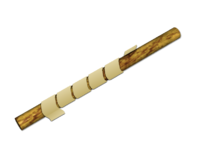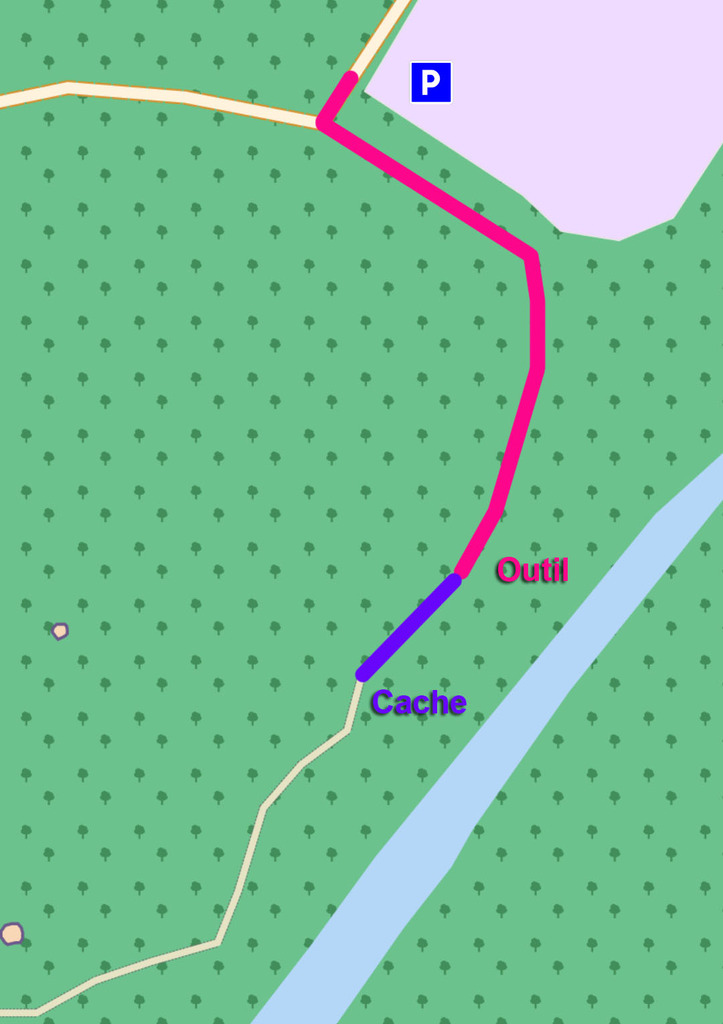Codage et décryptage # 5 La syctale spartiate

|
Je vous invite, au travers d'une série de cache, à évoluer dans l'univers du codage et du cryptage.
Les caches sont toutes visibles sur cette liste : Codage et cryptage.
Chaque cache comporte une énigme à résoudre. Les réponses seront à valider par "certitude" qui vous donnera des coordonnées volontairement erronnées (dont vous ne tiendrez pas compte) et le fameux indice.
Il vous faudra les conserver (et vous rappeler à quelle cache ils étaient associés) afin d'obtenir les coordonnées de la cache bonus et des informations importantes car elle ne s'ouvrira pas "toute seule" ...
|
La syctale spartiate
 |
 |
| Syctale avec message |
Syctale avec bandelette vierge |
Chez les Spartiates, la scytale, également connue sous le nom de bâton de Plutarque, était un bâton de bois utilisé pour lire ou écrire une dépêche chiffrée. Considérée comme le plus ancien dispositif de cryptographie militaire connue, elle permettait l'inscription d'un message chiffré sur une fine lanière de cuir ou de parchemin que le messager pouvait porter à sa ceinture.
Après avoir enroulé la ceinture sur la scytale, le message était écrit en plaçant une lettre sur chaque circonvolution. Pour le déchiffrer, le destinataire devait posséder un bâton d'un diamètre identique à celui utilisé pour l'encodage. Il lui suffit d'enrouler la scytale autour de ce bâton pour obtenir le message en clair.
Il s'agit de l'un des plus anciens chiffrements de transposition ayant été utilisé. Plutarque raconte son utilisation par Lysandre de Sparte en 404 av. J.-C.
La cache :
Il s'agit d'une mini multi!
Elle se situe en en lieu paisible au bord de la filière. Vous pourrez entretenir votre forme sur le parcours santé en en profiter pour pousser un peu plus loin vers la cache En remontant la Fillière..de l'ami Flocon !
La cache peut être trouvée directement en allant aux coordonnées finales, mais si vous souhaitez décoder le message qu'elle contient afin de trouver l'indice manquant de la bonus vous devrez au préalable récupérer un outil à l'étape 1.
Laissez la boîte contenant l'outil sur place, si vous la trouvez vide, c'est qu'un géocacheur est devant vous !!!

La précision des coordonnées étant délicates en forêt, vous trouverez des photos hint afin de vous aider
Comme dans les précédentes caches, vous pourrez valider votre réponse avec certitude afin d'obtenir la dernière partie manquante des coordonnées.
Attention : elles ne seront disponible que le jour de la sortie de la cache bonus fiinale. Vous devrez alors valider à nouveau votre réponse pour les obtenir.
La réponse à donner sans accents

|